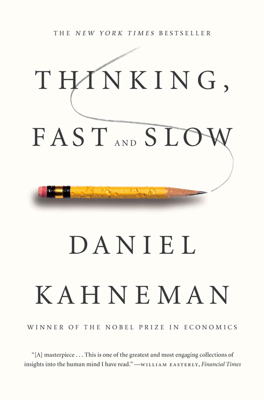Bernoulli’s Errors
Bernoulli’s Errors and the Shift to Prospect Theory
The chapter explores the foundational theories of decision-making, especially regarding economic and risky choices, originating from the views of Daniel Bernoulli and transitioning to Kahneman and Tversky's own development, Prospect Theory. It delves into the psychological assumptions underpinning these theories, pointing out the facets where earlier models fell short and how newer interpretations provide a more accurate understanding of human decision-making.
Historical Context: Economic Theory vs. Psychological Realism
- Economic theory traditionally views agents as rational, selfish, and with stable preferences, referred to as "Econs." However, psychologists see humans as possessing bounded rationality, subject to changing tastes, and often acting with generosity, thereby challenging the typical economic model.
- The term "Humans" is used to describe the psychological model of real people with biases and irrationalities, a concept that differs significantly from the purely rational "Econs."
Introduction to Expected Utility Theory
- Expected utility theory, foundational in economics, prescribes rational choices based on established axioms. It was developed by John von Neumann and Oskar Morgenstern not as a psychological model, but as a logic of choice.
- The theory operates on the basis that decision-makers weigh outcomes by their utility rather than absolute values, representing rational behavior in uncertain scenarios.
Prospect Theory: A New Angle on Decision-Making
- Kahneman and his collaborator, Amos Tversky, developed Prospect Theory to address and document systematic deviations from rationality observed in how real people make decisions under risk.
- Prospect Theory, described as a purely descriptive model, differs significantly from the normative prescriptions of Expected Utility Theory, incorporating psychological realism into the decision-making model.
Key Insights and Drawbacks of Early Theories
- The chapter discusses Bernoulli's application of a utility function to the understanding of gambles and risky choices, illuminating why individuals prefer certain outcomes over probabilistic ones, even if the expected outcomes are financially equivalent.
- Bernoulli’s error lay in his neglect of recent shifts in wealth and the subjective experiences of individuals, such as different reactions based on past contexts and reference points.
Theory-Induced Blindness: A Psychological Observation
- Kahneman highlights a common cognitive shortfall called "theory-induced blindness," where once a theoretical framework is accepted, it becomes challenging to recognize its flaws, and conflicting evidence is often dismissed or overlooked.
- This blindness to flaws is amplified by the strenuous nature of disbelief and the fatigue of critical thinking (System 2), giving undue credence to accepted theories despite notable exceptions.
Real-Life Applications and Observational Insights
- Illustrative examples in the chapter, such as comparisons between individuals with different wealth backgrounds facing similar choices, underscore the importance of reference points and prior experiences in shaping risk preferences.
- These insights stress the deficiency of theories that do not account for changes in individual circumstances or subjective experiences.
Conclusion on Evolving Economic and Psychological Understanding
- By melding psychological insights with economic behavior modeling, Kahneman and Tversky’s Prospect Theory offers a more nuanced and empirically grounded understanding of decision-making under risk.
- The chapter concludes by reflecting on the necessity of revising and challenging established theories with empirical observations of actual human behavior, moving beyond traditional economic models toward a more inclusive understanding of decision-making processes.
